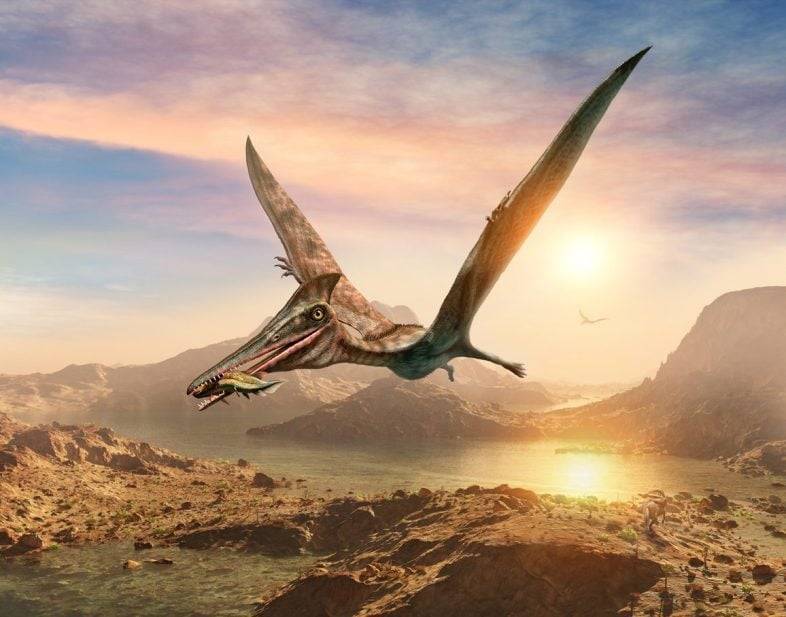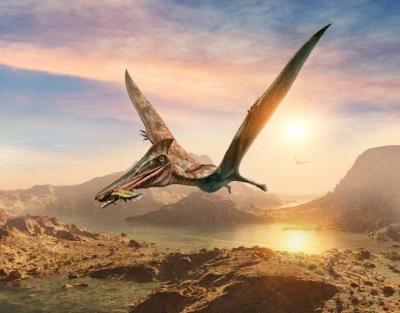In ancient times, under the shallow waters of the Eromanga Sea that once covered areas now barren in Australia, a pterosaur soared. This flying reptile was characterized by a bony crest at the ends of its upper and lower jaws, and a mouth filled with dagger-like teeth, ideal for catching fish and other marine prey. Scientists in Queensland, Australia, announced the discovery of this creature, which lived alongside dinosaurs and various marine reptiles during the Cretaceous period. The pterosaur, dubbed Halisaurus peterseni, has the most complete fossils of any pterosaur found in Australia.
It had a wingspan of 4.6 meters and lived around 100 million years ago, making Halisaurus slightly larger and five million years older than a closely related Australian pterosaur whose fossils were found in 2019. "Halisaurus" translates to "sea phantom," and this creature may have had a frightening appearance as it flew above the waves. According to Adele Pentland, a PhD student in paleontology at Curtin University in Australia and the lead author of the study published this week in Scientific Reports: "The Eromanga was a vast inland sea covering large parts of Australia when this pterosaur lived, but both have since disappeared. The ghost of both is evident from the fossils found in the area."
The fragility of pterosaur skeletons makes fossilization challenging. About 22 percent of the Halisaurus skeleton was extracted from the ground, including the complete lower jaw, part of the upper jaw, throat bones, 43 teeth, vertebrae, ribs, bones from both wings, and part of one leg. Pentland stated, "We inferred the presence of a muscular tongue based on the relative length of the throat bones compared to the length of the lower jaw." She added, "In many other pterosaurs, the length of the throat bones is 30 to 60 percent of the length of the lower jaw, while in Halisaurus, it makes up 70 percent. This suggests that while hunting fish and squid-like cephalopods, Halisaurus may have had an advantage in capturing live prey in its jaws."
Pentland expressed her "surprise" that the Halisaurus specimen preserved the throat bones, as these bones are "as thin as a piece of spaghetti and one is completely intact." The Halisaurus fossils are more complete than those of the pterosaur Vectidraco. Both belong to a group of pterosaurs called anhanguerids, identified from fossils discovered in China, the United States, Brazil, England, Spain, and Morocco. The creature's name also honors Kevin Peterson, an avocado farmer who became the curator of the Kronosaurus Corner Museum, where its fossils were discovered in 2021.
The first pterosaurs emerged around 230 million years ago and were one of three vertebrate groups capable of flight. Birds appeared around 150 million years ago, followed by bats about 50 million years ago. Pterosaurs went extinct in the same mass extinction event that wiped out the dinosaurs and their lineage of flying reptiles 66 million years ago after an asteroid impact.




